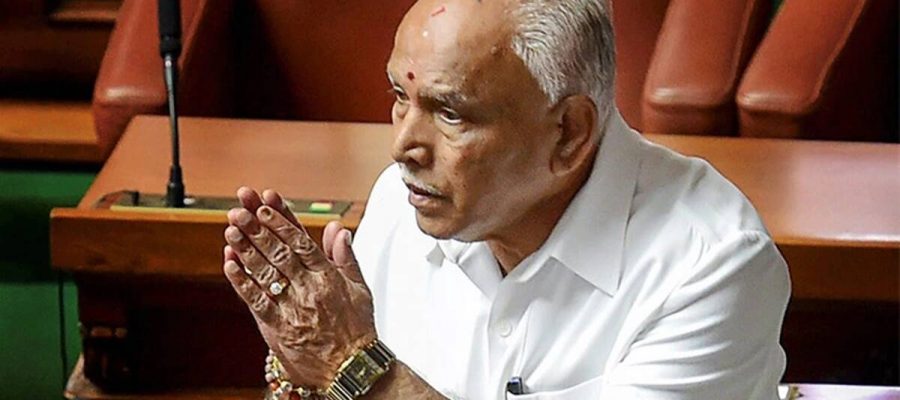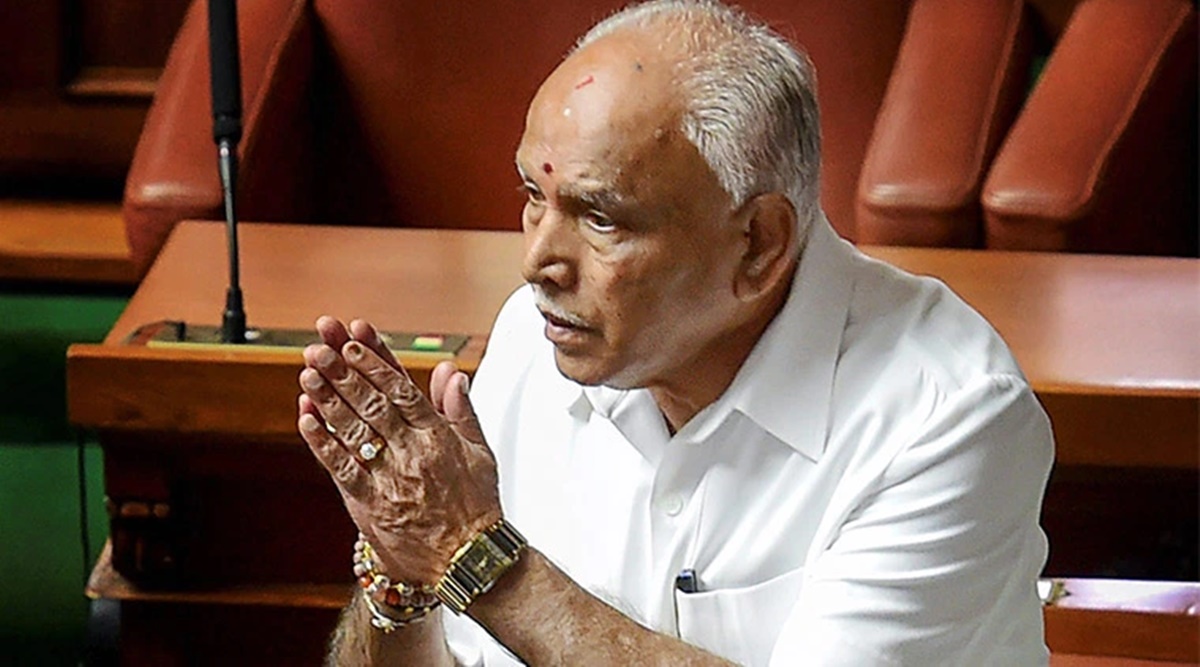Janaki Nair writes: The current crisis it faces is an outcome of the manner in which the party won power in the state.
The BJP’s fortunes in the only state in the South where it holds office appear to be ensnared in the very conditions which enabled its passage to power. It is the Karnataka in the BJP that seems to be at the root of the current crisis, and it will be the Karnataka in the BJP that might endanger its tenuous and illegitimately procured grasp of the government in 2019.
True, the statements of BJP state president, Nalin Kumar Kateel, national general secretary, C T Ravi, and now, central interlocutor, Arun Singh, reveal their collective dismay with the wayward habits of the motley MLAs, who have been straying from the cherished goals of uniting Hindus, hating the Congress (and Muslims) and keeping the politics of The Great Indian Faction at bay. If anything, the BJP MLAs have enthusiastically participated in advancing factional politics. Karnataka’s BJP should follow the honourable path of the PM in staying “incorruptible” was Ravi’s plaintive plea, itself a tacit recognition of how deeply the hands of the current leadership were steeped in the till. Find fault with Rahul Gandhi’s politics, rather than with Chief Minister Yediyurappa’s style of functioning, was Arun Singh’s desperate suggestion during his three-day mission to the state this week. Party “discipline” of the RSS kind, despite Kateel’s guiding hand, is not only being flouted by the “newcomers” to the party, but by old stalwarts as well. K S Eshwarappa, former deputy CM and current minister, for example, was conspicuous during the Kuruba agitation for change to ST status.
If the Karnataka BJP today navigates the narrow straits between Scylla and Charybdis, it is because of the unique circumstances that determined its rise to power under Yediyurappa over the years. Consider the events of the last four or five months. It was not the state’s farmers who laid siege to the capital city of Bengaluru, despite the continuing and urgent farmers’ agitation against the farm laws. Nor were the threatened workers of Toyota Kirloskar or Wistron from industrial areas around Bengaluru able to make their plight visible on the roads to the capital.
Instead, it was the saints who came marching in, each demanding alterations in the system of reservations for their sect, and dominating, if not crowding out, all other equally important agitations in the Kannada press. The CM made his peace with the two most vociferous demands — by the Panchamasalis (the majority Lingayat sub caste) for transfer from the 3B list to the 2A list, and from the Kurubas, for transfer to the ST list from the 2A. He did this in part by buying time, in part by engaging with the symbolics of appropriation (particularly the mega “development” of the Anubhava Mantapa at Basavakalyan) and in part by setting up caste corporations as a new redistributive measure to create new unities out of emerging fractures.
It is once more the saints who are threatening a march on Delhi if Yediyurappa is dislodged. Despite the 4,000 mathas (monastic institutions) that dot the Karnataka landscape, the majority of them Veerashaiva/Lingayat mathas, mobilising a thousand mathadishas (chief abbotts) to besiege Parliament may be an idle threat. But the message is clear — the Veerashaiva Lingayat Mahasabha, assorted mathas, and some Lingayat youth wings would prefer to keep the post in Veerashaiva/Lingayat hands.
Not for nothing did the eminent literary critic and historian M M Kalburgi, who was murdered for his insurgent scholarship, call the mathas a form of “unauthorised government” (anadhikritha sarkara). Mathas, and particularly Veershaiva/Lingayat mathas, have been extremely influential in the realm of representative politics since the 1950s, and Yediyurappa — and now his son B Y Vijayendra — has deployed their immense influence and moral authority to the party’s advantage. Although they have not directly represented the people, unlike their Indo-Gangetic counterparts, mathadishas have increasingly become, especially since the 1980s reservations stirs, a continuous and hyper-visible presence on the political — and especially the developmental — stage.
One could even say that what has emerged in Karnataka is a form of divided sovereignty, between math and state, a relationship that has been fully exploited by the party in power. The Veershaiva/Lingayat community, which constitutes a good 17-18 per cent of the population, is in no mood to relinquish its current hold on power.
But the surface imperative of staying together is seriously undermined by cacophonous demands for representing regions (north Karnataka) and dominant sub sects of the Lingayats (Panchamasalis). At this point, the central leadership can do little but rap the dissidents on the knuckles. Both the BJP and Yediyurappa need each other like never before, since they both risk the wilderness otherwise. And both need to skilfully negotiate with these powerful institutions. No wonder Ravi was forced to acknowledge the important role they played in bringing the BJP to power in the state.
But no wonder too that CT Ravi could not conceal his anxiety about taming the power of the mathas, and getting them to take their place behind the greater goal of a Hindu Rashtra, rather than engaging in inter-caste and intra-caste skirmishes. Or worse, nurturing the dream of de jure power-sharing. Having long enjoyed de facto power in Karnataka’s villages and towns, the mathas enjoy a firm grip on politicians of all ideological hues, but especially those from the BJP. Other political legacies — mobilisations by farmers and workers, a robust and creative Dalit movement, consolidations of dominant castes, through the strengthening of development and grass roots democracy — have of late been eclipsed by the rise and rise of the Karnataka matha. They will play a decisive role in deciding Yediyurappa’s fate, whether within or outside the BJP.
This column first appeared in the print edition on June 24, 2021 under the title ‘An unholy stalemate’. The writer is former professor of history, JNU
Source: Read Full Article



